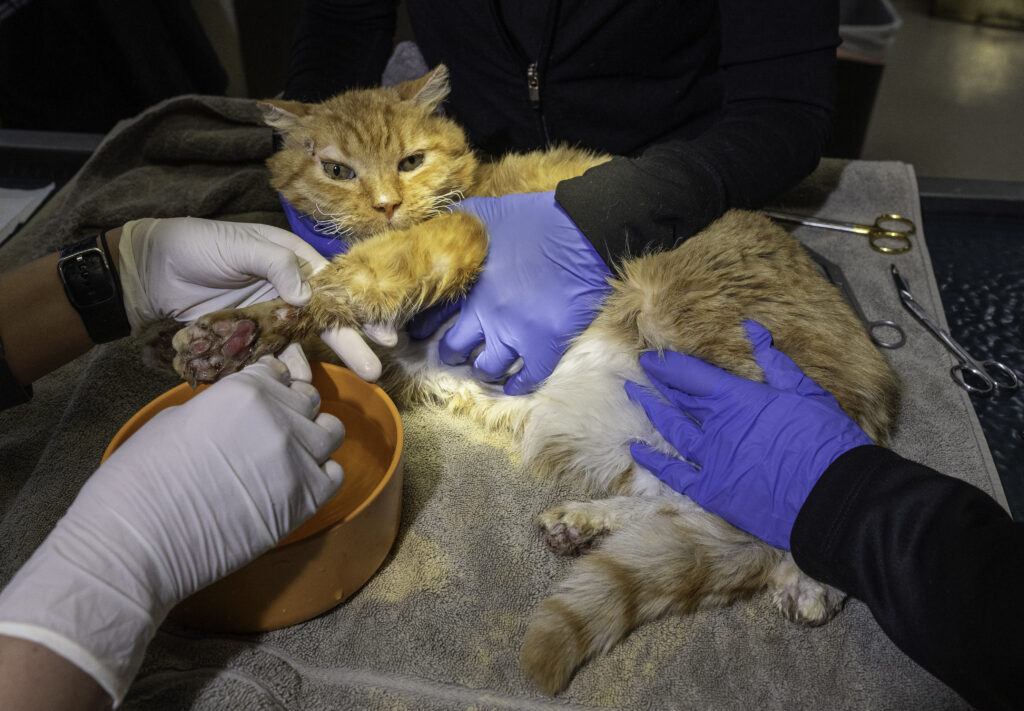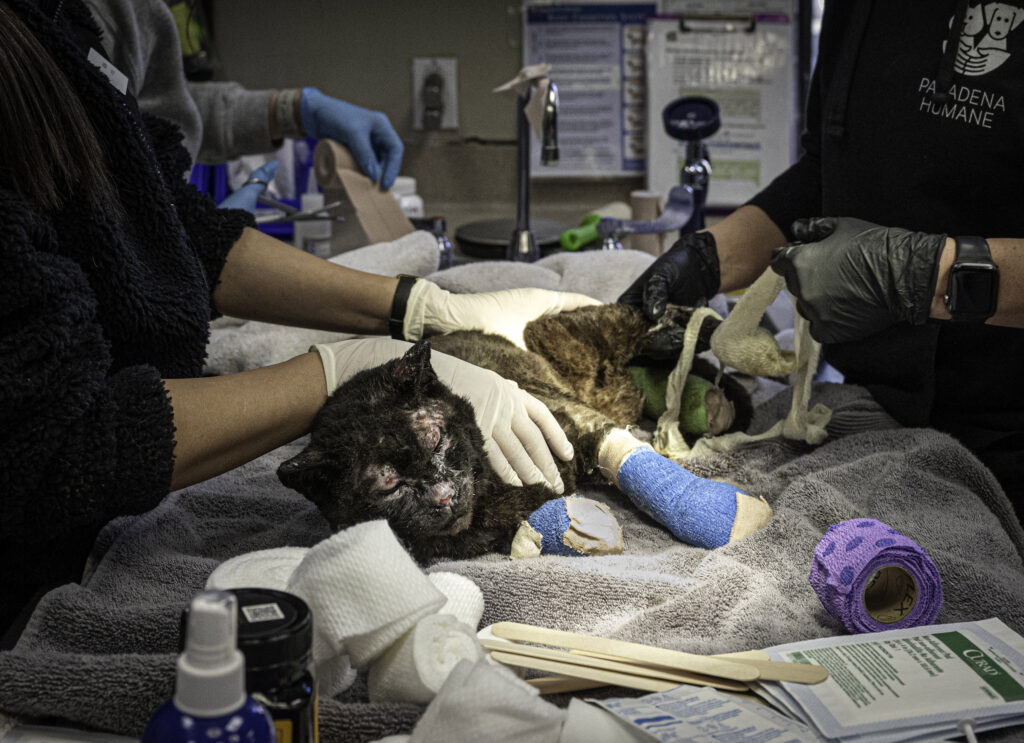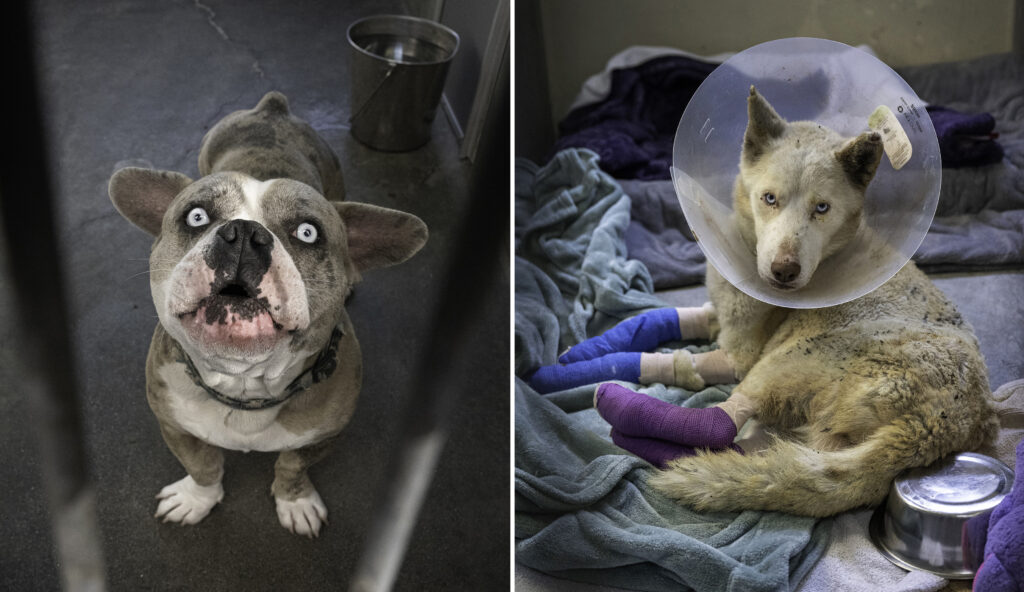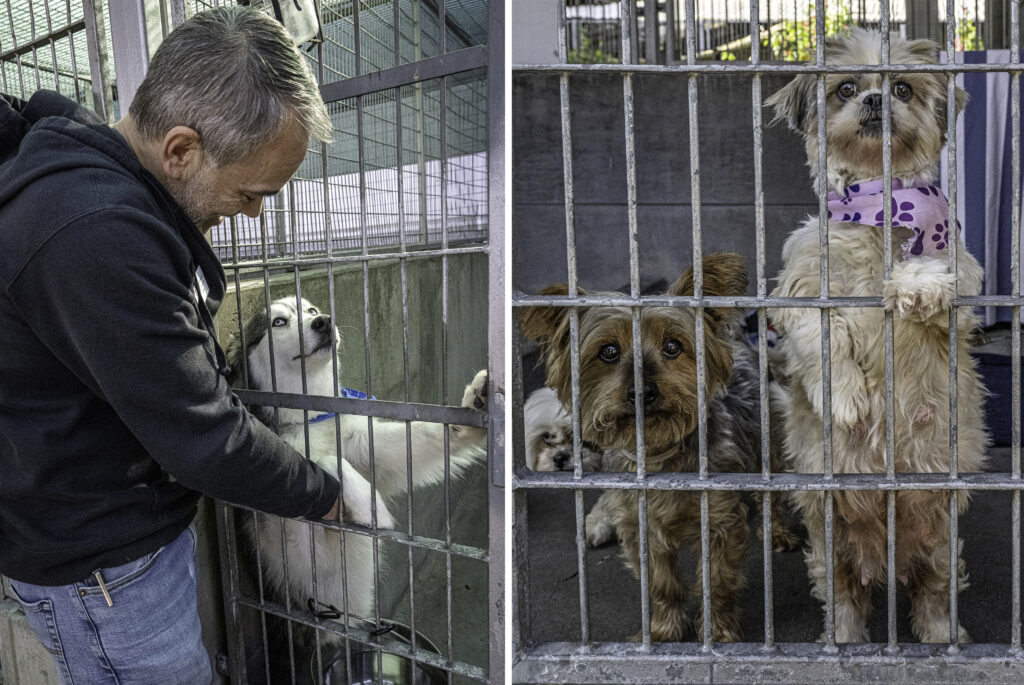January 7, 2025, altered the lives of Angelenos — both human and animal — forever. While homes and buildings can be rebuilt, lives lost to the flames cannot. First responders worked tirelessly to evacuate residents and their pets, but many domestic and wild animals weren’t as fortunate.
At Pasadena Humane, which has been serving the Greater Los Angeles community since 1903, staff and volunteers opened their doors, offering critical care and shelter to displaced animals and support to the people who love them.

Saving Pets from the Palisades Fires
Kevin McManus, PR and Communications Manager for Pasadena Humane recalls the urgency of that fateful day. “With the red flag warnings already in place and the Palisades Fire already burning, everyone was monitoring the situation closely,” he said. “When the severity of the situation became apparent, we knew our role as the emergency evacuation center for animals would be needed to a degree we never have been needed before, so we immediately mobilized our intake team.”
As the fire spread, so did the crisis. “Evacuated people began bringing their pets to us overnight on January 7,” McManus said. “By the end of the day on the 8th, we had taken in nearly 350 pet family members of people evacuating the Eaton Fire.”
This sudden influx of displaced pets put an immense strain on resources. But the community rallied. “On January 8, we asked on our social media channels for things we thought we might run short on — extra-large dog crates, water/food bowls, blankets, and towels,” he said. “By Friday, January 10, we received so many in-kind donations of the four items we asked for, as well as mountains of pet food, collars, leashes, treats, and other pet supplies, that we ran out of space to store it all and had to temporarily stop accepting items.”
Treating Fire-Affected Animals
While many pets evacuated with their owners were physically unharmed, the same couldn’t be said for many other animals in the area. First responders brought in strays and injured animals suffering from burns, smoke inhalation, dehydration, and exhaustion.

“Some were in smoky areas for so long they couldn’t even open their eyes,” McManus said. “We have an animal ICU on site, so the talented team of veterinarians and vet techs were able to quickly triage and begin treating the injured animals. Several animals received oxygen, pain medication, and burn treatment.”
I have been documenting the miraculous recoveries of many of Pasadena Humane’s patients. Some will require weeks, if not months, to become adoptable or return home, but many are already up for adoption.
Beyond Rescue: Pasadena Humane’s Year-Round Commitment
In addition to pet adoptions and foster programs, Pasadena Humane offers programs and services to help people care for and keep their pets, such as free and low-cost spay/neuter and vaccines, a pet food pantry, and an animal support call center. Their efforts have helped countless pets and wildlife through adoptions, wildlife rehabilitation, lost and found, veterinary services, training classes, and surrender prevention assistance.

Emergency Pet Safety Tip Guide
In the wake of this disaster, Pasadena Humane has shared critical guidelines to help pet owners prepare for emergencies:
- Include pets in your evacuation plan. Know where your local evacuation sites will be and if they allow pets. In case you need to evacuate quickly, pack crates or carriers, leashes, wet and dry food (at least five days’ worth), a supply of water, dishes, a few toys, and your pet’s medicine in an easy-to-carry bag.
- Update pet identification. Ensure your pet’s ID tag and microchip are up to date with your current contact information in case they get lost.
- Be ready to leave and take your pets. Stay up to date at all times during an emergency. Your city’s website and social media will be your best guide for emergency communications. We also recommend you sign up with your city’s emergency response notification system to get text alerts.
- Identify a pet caretaker. If you become ill or hospitalized, it’s important to have someone available to care for your pet in your absence. This caretaker can be a friend, family member, or neighbor. Above all, make sure you’ve discussed your plans with this person and let them know about any special needs your pet may have, such as medication or a feeding schedule. Providing your pet caretaker with a spare set of house keys ensures that they will be able to access your pet in an emergency.
- Update your pet’s vaccines. If you have to board your pet, they must be up-to-date on their vaccines. Check with your local veterinary office to see if they’re currently offering vaccine services. Always keep a copy of your pet’s medical records in their go bag or somewhere easy to find so you can provide this information as needed.
- Make arrangements with a trusted neighbor if you’re not home. If you can’t get home during an emergency, it’s helpful to have a trusted neighbor who can evacuate your pet safely. Having this plan established in advance could have saved many pets during the recent wildfires.
- Prepare for power outages. If you use automatic feeders or pet fountains, check to see if they have a backup battery or allow alternate access to food or water in the event of a power outage. If they don’t, keep pet food and water bowls on hand. If you lose power and need to light candles, supervise your pets around open flames — or better yet, opt for flameless, battery-operated candles and flashlights to safely light your way around your home.
- Manage your pet’s anxiety and stress. Unusual weather, seismic events, and fires can be as scary for our pets as they are for us. If your pet experiences anxiety and stress from a storm, create a sanctuary space for them, play soothing music, and distract them with puzzle feeders. Over-the-counter calming chews may also help.
- Check for hazards after a storm. When the emergency is over, check your backyard for downed trees, damaged fences, or other hazards before letting your dog outside.

For any animal-related emergency, those in the Pasadena area can reach the organization at 626.792.7151 ext. 970.
How to Help
Pasadena Humane is a community-supported animal resource center that provides compassion and care for all animals. Since 1903, Pasadena Humane has offered lifesaving programs and services for animals throughout the Greater Los Angeles Area. In addition to pet adoptions and fostering, it offers programs and services to help people care for and keep their pets, such as free and low-cost spay/neuter and vaccines, a pet food pantry, and an animal support call center.
Donate now and double your impact: Make It Better Foundation has pledged a $5,000 matching grant, doubling the impact of each dollar donated, up to $5,000.

Help an Animal Find a Home
For animal lovers in the Chicago area, PAWS Chicago has become a national model for the No Kill movement, providing rescue, adoption, and medical care to thousands of homeless cats and dogs each year.
By adopting, fostering, donating, or volunteering, you can be part of a compassionate movement to ensure every pet gets the love and care they deserve.


Assignments have taken award-winning photographer and Make It Better Foundation Director of Photography Mark Edward Harris to more than 100 countries on all seven continents. His books include Faces of the Twentieth Century: Master Photographers and Their Work, The Way of the Japanese Bath, Wanderlust, North Korea, South Korea, Inside Iran, The Travel Photo Essay: Describing A Journey Through Images and his latest, The People of the Forest — a book about orangutans. He proudly supports the Center for Great Apes, the Borneo Orangutan Survival Foundation, and the Search Dog Foundation. You can find him on Instagram or at his website.

